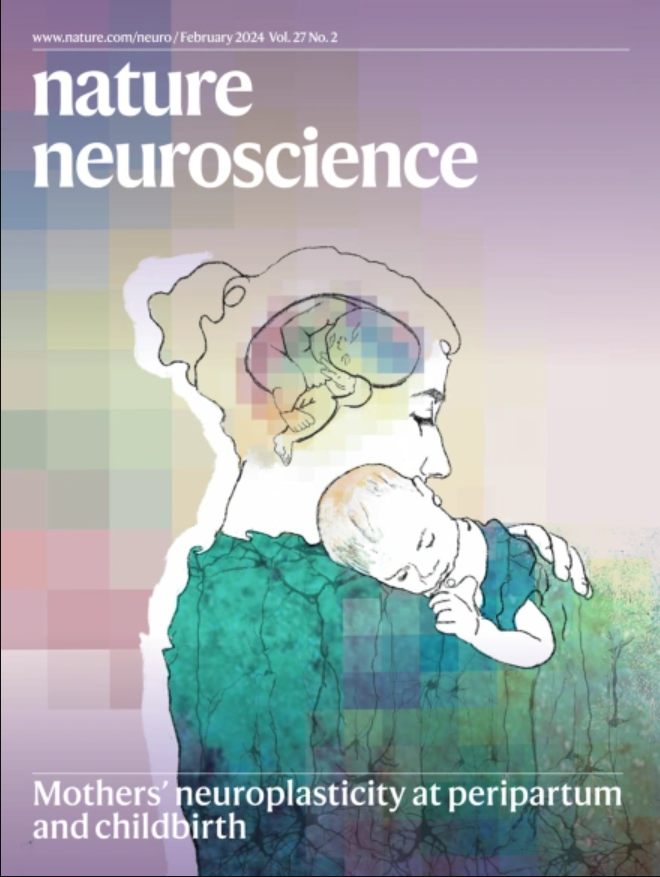一个流脑-声神经假体来恢复自然的交流
IF 21.2
1区 医学
Q1 NEUROSCIENCES
引用次数: 0
摘要
自然的口头交流是瞬间发生的。讲话延迟超过几秒钟就会破坏对话的自然流畅。这使得瘫痪患者难以参与有意义的对话,可能导致孤立感和挫折感。在这里,我们使用了一位患有严重麻痹和关节炎的临床试验参与者的高密度语言感觉运动皮层表面记录来驱动一个连续流的自然语音合成器。我们设计并使用深度学习递归神经网络换能器模型,以80毫秒为增量的神经解码,实现针对参与者损伤前语音个性化的在线大词汇可理解流利语音合成。在离线状态下,这些模型展示了隐式语音检测能力,可以无限期地连续解码语音,从而实现解码器的不间断使用,并进一步提高了速度。我们的框架也成功地推广到其他无声语音接口,包括单单元记录和肌电图。我们的研究结果引入了一种语言-神经假肢模式,以恢复瘫痪患者的自然语言交流。本文章由计算机程序翻译,如有差异,请以英文原文为准。


A streaming brain-to-voice neuroprosthesis to restore naturalistic communication
Natural spoken communication happens instantaneously. Speech delays longer than a few seconds can disrupt the natural flow of conversation. This makes it difficult for individuals with paralysis to participate in meaningful dialogue, potentially leading to feelings of isolation and frustration. Here we used high-density surface recordings of the speech sensorimotor cortex in a clinical trial participant with severe paralysis and anarthria to drive a continuously streaming naturalistic speech synthesizer. We designed and used deep learning recurrent neural network transducer models to achieve online large-vocabulary intelligible fluent speech synthesis personalized to the participant’s preinjury voice with neural decoding in 80-ms increments. Offline, the models demonstrated implicit speech detection capabilities and could continuously decode speech indefinitely, enabling uninterrupted use of the decoder and further increasing speed. Our framework also successfully generalized to other silent-speech interfaces, including single-unit recordings and electromyography. Our findings introduce a speech-neuroprosthetic paradigm to restore naturalistic spoken communication to people with paralysis. Naturalistic communication is an aim for neuroprostheses. Here the authors present a neuroprosthesis that restores the voice of a paralyzed person simultaneously with their speaking attempts, enabling naturalistic communication.
求助全文
通过发布文献求助,成功后即可免费获取论文全文。
去求助
来源期刊

Nature neuroscience
医学-神经科学
CiteScore
38.60
自引率
1.20%
发文量
212
审稿时长
1 months
期刊介绍:
Nature Neuroscience, a multidisciplinary journal, publishes papers of the utmost quality and significance across all realms of neuroscience. The editors welcome contributions spanning molecular, cellular, systems, and cognitive neuroscience, along with psychophysics, computational modeling, and nervous system disorders. While no area is off-limits, studies offering fundamental insights into nervous system function receive priority.
The journal offers high visibility to both readers and authors, fostering interdisciplinary communication and accessibility to a broad audience. It maintains high standards of copy editing and production, rigorous peer review, rapid publication, and operates independently from academic societies and other vested interests.
In addition to primary research, Nature Neuroscience features news and views, reviews, editorials, commentaries, perspectives, book reviews, and correspondence, aiming to serve as the voice of the global neuroscience community.
 求助内容:
求助内容: 应助结果提醒方式:
应助结果提醒方式:


